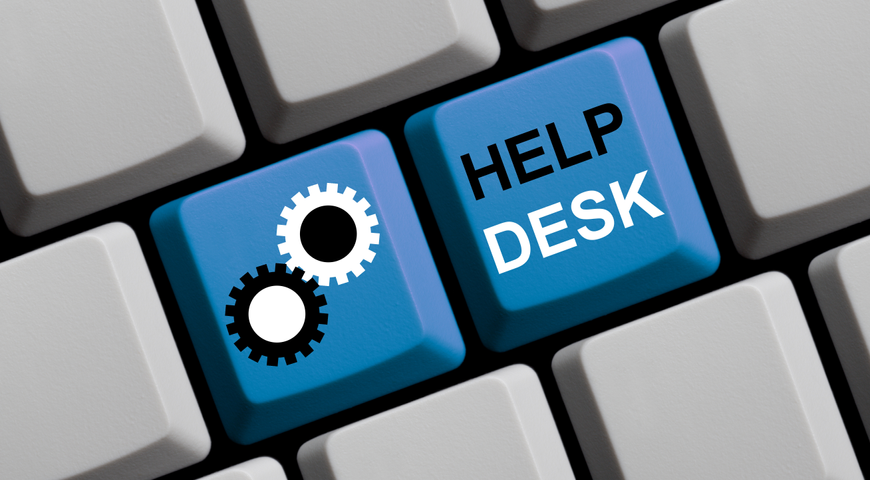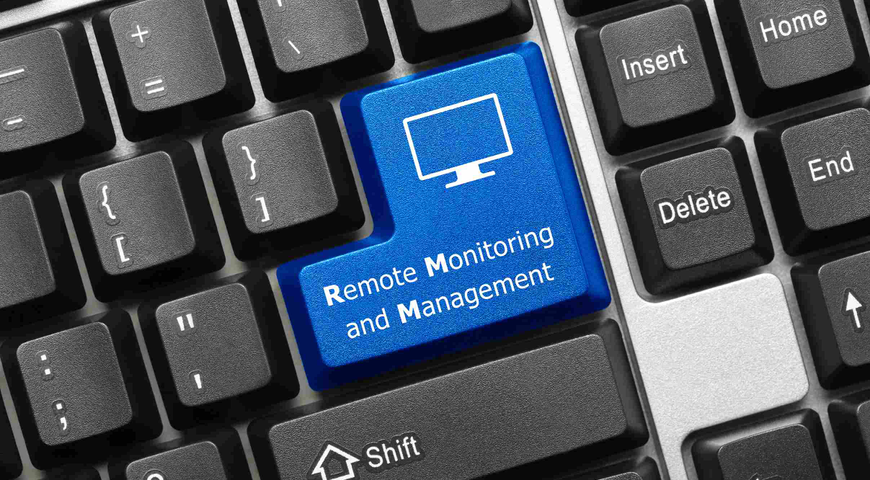
Building an effective managed service provider (MSP) helpdesk requires a strategic blend of technical prowess and client-centric focus. In this comprehensive guide, we unravel the intricacies of crafting a service desk that goes beyond mere issue resolution, aiming to redefine the standards of client support in the MSP realm. From the foundational components that lay the groundwork to the nuanced art of ticket management ensuring, we explore the critical elements that constitute a high-performing IT provider helpdesk.
What this article will cover:
● Introduction to MSP helpdesk importance.
● Key components of an effective MSP helpdesk.
● Designing user-friendly helpdesk interfaces.
● Prioritizing and managing tickets efficiently.
● Essential tools and technologies for the modern helpdesk.
● Training helpdesk staff for success.
● The role of Acronis advanced automation in streamlining processes.
● Monitoring, metrics, and continuous improvement.
● Common challenges in MSP helpdesk management and solutions.
● Future of automation: The next generation of MSP helpdesk.
Introduction to MSP helpdesk importance
In the dynamic landscape of managed service providers (MSPs), the helpdesk plays a pivotal role in shaping client satisfaction on the front lines of issue resolution. The helpdesk serves as the nerve center of client interactions, acting as a direct conduit between the MSP and its clientele.
The role of the helpdesk in client satisfaction
The helpdesk is the touchpoint where clients seek assistance, pose inquiries, and voice concerns. A well-crafted and efficiently managed service desk not only resolves issues but becomes a cornerstone in fostering positive client experiences. From timely responses to effective solutions, the helpdesk shapes the overall perception clients have of the MSP.
First line of defense in issue resolution
Beyond its role in satisfaction, the helpdesk acts as the initial point of contact for clients grappling with technical challenges, ensuring swift and accurate diagnosis of problems. As the gateway to problem solving, the helpdesk not only resolves immediate concerns but lays the foundation for a robust and responsive MSP support ecosystem.
Key components of an effective MSP helpdesk
Centralized ticketing system
A cornerstone of operational efficiency, a centralized ticketing system serves as the command center for tracking and managing client issues. By consolidating support requests into a unified platform, streamlining communication and providing a comprehensive overview for helpdesk teams, a ticketing system enhances response times and contributes to overall client satisfaction.
Knowledge base and self-service options
Empowering clients and minimizing resolution time, a robust knowledge base and self-service options are indispensable components of an effective MSP helpdesk. A well-curated knowledge base serves as a repository of useful information, enabling clients to find solutions on their own time. Self-service options can help reduce ticket volume and foster a more proactive approach to IT service.
Multichannel support capabilities
In an era of diverse communication channels, providing multichannel support is imperative for a modern MSP helpdesk. A versatile and integrated approach to communication enhances accessibility, responsiveness and overall client engagement, positioning the helpdesk as a client-centric support hub.
Designing user-friendly helpdesk interfaces
For an MSP business, the user interface of a helpdesk shapes the overall experience for both clients and support teams. Here, we’ll explore key principles and practices in crafting user-friendly interfaces that enhance client support operations.
The importance of intuitive design
In the fast-paced world of technology, where users are bombarded with information and tasks, the need for user-friendly helpdesk interfaces cannot be overstated. The success of a helpdesk system hinges on its ability to provide a seamless experience for users. Intuitive design is not just a nice-to-have feature; it is a critical component that can enhance user satisfaction, boost productivity and ultimately contribute to the success of an organization's support infrastructure.
User experience (UX) best practices
Creating a positive user experience (UX) should be at the forefront of designing helpdesk interfaces. An effective interface should empower users to find solutions quickly and effortlessly. To achieve this, adhere to UX best practices that prioritize clarity, simplicity and consistency. Utilize a clean and organized layout, logical navigation paths and easily understandable language. Consistent design elements across the interface not only enhance usability but also contribute to a cohesive and professional look.
Incorporate user-centric features, such as personalized dashboards and customizable preferences, that enable users to tailor their experience based on their unique needs. Responsive design is crucial, ensuring that the interface remains user friendly across various devices and screen sizes. Accessibility considerations are equally vital — a well-designed helpdesk should be usable by individuals with diverse abilities, ensuring inclusivity and compliance with accessibility standards.
Gathering feedback for interface improvement
Continuous improvement is key to the success of any MSP helpdesk interface. Gathering feedback from users provides valuable insights into their experiences and allows for iterative enhancements. Implement mechanisms for users to easily provide feedback, such as surveys, feedback forms or direct communication channels. Actively monitor user interactions, analyze user behavior and leverage analytics tools to identify pain points and areas for improvement.
Regularly review user feedback and prioritize issues based on their impact on user satisfaction and productivity. Engage with users to understand their needs and expectations, involving them in the design process whenever possible. User feedback is a powerful tool for driving meaningful enhancements and ensuring that the helpdesk interface evolves to meet the changing needs of its users.
Prioritizing and managing tickets efficiently
Organizations must adjust their strategy to categorize, queue and address tickets as they grapple with an increasing volume of user requests and technical issues. In this article, we will explore key aspects of this process, including categorizing tickets based on severity and impact, effective queue management techniques and the importance of setting and meeting service level agreements (SLAs).
Categorizing tickets based on severity and impact
The first step in efficient ticket management is categorizing issues based on their severity and impact on users and the organization. Establishing a clear and well-defined system helps prioritize tickets and allocate resources effectively. Categories often include:
● Critical issues: These are high-impact problems that severely disrupt business operations or affect a large number of users. Critical issues often require immediate attention and resolution.
● High priority issues: These are significant problems that need prompt resolution but may not have an immediate, critical impact on operations.
● Medium priority issues: Issues that impact users but have a moderate effect on operations fall into this category. They require attention but may not be as time sensitive as higher-priority tickets.
● Low priority issues: These are non-urgent or minor problems that do not significantly impact daily operations. They can be addressed during less critical times.
Effective queue management techniques
Once tickets are categorized, effective queue management is essential for maintaining a streamlined and efficient support process. Key techniques include:
● Round-robin assignment: Distributing tickets evenly among support agents ensures a balanced workload and prevents bottlenecks.
● Automated routing: Implementing automated ticket routing based on categories, agent expertise, or workload helps expedite ticket assignment to the right individuals.
● Prioritization within queues: Further prioritize tickets within queues to ensure that critical issues are addressed promptly, even if there is a backlog of lower-priority items.
● Real-time monitoring: Continuous monitoring of ticket queues allows for proactive adjustments and quick response to changing circumstances.
Setting and meeting service level agreements (SLAs)
Service level agreements (SLAs) define the expectations and commitments between the helpdesk and its users. Setting realistic SLAs and consistently meeting them are crucial for building trust and ensuring client satisfaction. Key considerations include:
● Clear SLA definitions: Define response times, resolution times and escalation procedures clearly in SLAs. Tailor these based on the severity and impact categories.
● Regular SLA reviews: Periodically review and, if necessary, adjust SLAs based on evolving business needs, resource capabilities and user expectations.
● Automated SLA monitoring: Implement tools that automate SLA tracking and alert the team when a ticket is approaching or has breached the defined SLA.
● Communication and transparency: Keep users informed about the status of their tickets, especially if there are delays. Transparent communication fosters understanding and trust.
Essential tools and technologies for the modern helpdesk
To meet the evolving needs of clients and maintain a high standard of service, MSPs must leverage cutting-edge helpdesk tools and technologies. Let’s explore essential components that supercharge the modern helpdesk by enhancing efficiency, scalability and overall client satisfaction.
Integrating remote monitoring and management (RMM) tools
Remote monitoring and management (RMM) tools play a pivotal role in proactive support by enabling the identification and resolution of issues before they impact clients. The seamless integration of RMM tools empowers MSPs to deliver prompt and efficient support, allowing for real-time monitoring of client systems, proactive issue resolution and enhanced reliability.
Utilizing cloud-based helpdesk solutions
Cloud-based helpdesk solutions help MSPs to adapt to evolving needs seamlessly. Utilizing these platforms offer many advantages, from enhanced scalability to real-time collaboration among support teams. Cloud-based solutions not only centralize information but also facilitate efficient communication and collaboration, ensuring that the helpdesk remains agile and responsive in the face of dynamic client requirements.
The role of chatbots and AI assistants
In the era of artificial intelligence, chatbots and AI assistants have become integral components of the modern helpdesk. These technologies play a crucial role in enhancing client interactions by providing instant responses to common queries and automating routine tasks. From resolving repetitive queries to routing tickets and collecting information, these technologies contribute to a more seamless and personalized client experience.
Training helpdesk staff for success
In the dynamic landscape of client support, the success of a helpdesk team is contingent upon the continuous training and development of its staff. As technology evolves and client expectations rise, investing in the professional growth of helpdesk personnel becomes imperative. This article explores key strategies for training IT support staff, emphasizing the significance of regular training programs, soft skills development and continuous learning opportunities.
Investing in regular training programs
To ensure the effectiveness of a helpdesk team, organizations must invest in regular training programs — not as a one-time event, but as an ongoing process. Technology, software and client needs evolve, and providing staff with up-to-date knowledge is crucial.
Regular training programs should cover a spectrum of topics, including the latest software updates, troubleshooting techniques and industry best practices. This investment not only enhances the technical prowess of helpdesk staff but also cultivates a culture of adaptability and responsiveness.
Emphasizing soft skills and client service etiquette
While technical skills are vital, the success of a helpdesk team equally depends on the soft skills and client service etiquette of its members. Effective communication, empathy and patience are essential qualities that can significantly impact client satisfaction.
Training should incorporate modules focused on enhancing these soft skills. Role-playing exercises, simulated client interactions, and feedback sessions can help staff practice and refine their interpersonal skills. Emphasizing the human element of client support ensures that helpdesk staff not only resolve technical issues but also provide a positive and empathetic client experience.
Continuous learning and certification opportunities
The tech landscape is ever evolving, with new tools and methodologies emerging regularly. To stay ahead, helpdesk staff must engage in continuous learning. Organizations should encourage and facilitate opportunities for staff to pursue additional certifications, attend industry conferences and participate in workshops.
Certification programs not only validate the expertise of helpdesk professionals but also instill a sense of accomplishment and motivation. By fostering a culture of continuous learning, organizations demonstrate their commitment to employee development and the delivery of high-quality support services.
Utilizing technology for training
Incorporating technology into training programs can enhance their effectiveness. Online courses, webinars and interactive modules allow staff to learn at their own pace and revisit materials as needed. Additionally, virtual reality (VR) and augmented reality (AR) can be utilized to simulate realistic helpdesk scenarios, providing hands-on experience in a controlled environment.
Implementing a knowledge base
A well-organized and regularly updated knowledge base is an invaluable resource for helpdesk staff. It provides easy access to a wealth of information, troubleshooting guides, and best practices. By encouraging the use of a knowledge base, organizations empower helpdesk personnel to find solutions efficiently and promote self-directed learning.
The role of Acronis PSA in streamlining processes
Leveraging advanced automation tools is instrumental in enhancing the efficiency and effectiveness of helpdesk operations. This section explores the specific contributions of Acronis PSA in streamlining processes, offering a detailed insight into key features that help managed IT service providers to optimize their helpdesk workflows.
Auto-assigning and routing tickets
One of the primary challenges in managing a helpdesk is ensuring that incoming tickets are assigned to the most suitable team member promptly. Acronis addresses this challenge by implementing intelligent auto-assigning and routing algorithms. These algorithms take into account factors such as skill sets, workload and historical performance to automatically route tickets to the most qualified staff member.
By automating the ticket assignment process, Acronis ensures that issues are directed to the right personnel, reducing resolution times and improving overall client satisfaction. This feature not only optimizes resource allocation but also minimizes the risk of human error in manual ticket assignment.
Automated responses for common issues
Helpdesk staff often encounter repetitive and routine issues that can be resolved with predefined responses. Acronis Advanced Automation enables the creation and deployment of automated responses for common problems, allowing for swift and consistent issue resolution.
By leveraging Acronis to automate responses, helpdesk personnel can handle high-volume tasks more efficiently. This not only accelerates the ticket resolution process but also enhances the overall responsiveness of the helpdesk. Clients benefit from quicker solutions to common problems, leading to improved satisfaction and a positive perception of the support service.

Reducing manual data entry and repetitive tasks
Manual data entry can be time consuming and is often prone to errors. Acronis addresses this challenge by automating data entry and routine tasks, freeing up valuable time for helpdesk staff to focus on more complex and high-level aspects of their roles.
Through integration with various systems and applications, Acronis automates data retrieval, update processes, and other common tasks. By automating these routine activities, the MSP’s staff can dedicate more time to critical thinking, creative problem-solving, and delivering exceptional client service.
Breaking it down: 8 ways Acronis helps with helpdesk management for MSPs
- Automated ticket assignment: Acronis PSA assists MSPs in efficiently handling ticket volumes by automating the assignment and routing of support tickets, ensuring they reach the appropriate personnel quickly.
- Reduced manual tasks: Acronis contributes to increased operational efficiency by minimizing manual data entry and automating repetitive tasks, allowing helpdesk staff to focus on more complex and value-added aspects of support.
- Predictive analytics integration: Acronis facilitates the integration of predictive analytics, so that managed service providers can provide more proactive support. This feature enhances the overall responsiveness and reliability of the helpdesk.
- Efficient queue management: This helpdesk solution assists in optimizing workflows and managing ticket queues effectively, preventing bottlenecks and ensuring timely resolution of support requests.
- Immersion in emerging technologies: Acronis helps MSPs stay at the forefront of emerging technologies, such as augmented reality (AR) and virtual reality (VR), offering immersive troubleshooting experiences and real-time visualizations for enhanced support.
- Continuous learning opportunities: By offering opportunities for continuous learning and certifications, Acronis supports the ongoing professional development of helpdesk staff, ensuring they stay current with industry standards and technologies.
- Adapting to future tech challenges: Acronis contributes to future-proofing the helpdesk by providing features that help IT providers anticipate and adapt to evolving tech challenges, fostering a proactive approach to support in the face of industry shifts.
Monitoring, metrics and continuous improvement
A high-performing helpdesk doesn't run itself; it requires ongoing monitoring, assessment and refinement. This section looks at the critical aspects of monitoring, metrics and continuous improvement, outlining key strategies that MPSs can use to adapt to evolving client needs.
Key performance indicators (KPIs) for the helpdesk
Establishing and tracking key performance indicators (KPIs) is a fundamental practice for evaluating the effectiveness of a helpdesk. KPIs serve as quantifiable benchmarks that enable organizations to gauge the efficiency and success of their support operations. Common helpdesk KPIs include average response time, first-call resolution rates, ticket volume trends and client satisfaction scores.
Client feedback and satisfaction surveys
Client satisfaction is at the core of helpdesk success, making it crucial to gather feedback directly from end-users. Client feedback and satisfaction surveys provide valuable insights into the perceived quality of support services. Utilizing tools like surveys, organizations can collect information on various aspects, including responsiveness, problem resolution effectiveness and the overall client experience.
Periodic reviews and process adjustments
Periodic reviews are essential for assessing the efficiency and relevance of helpdesk processes. These reviews involve a comprehensive evaluation of workflows, response protocols and overall team performance. By conducting regular reviews, organizations can identify bottlenecks, outdated procedures or emerging challenges that may impact service delivery.
Common challenges in MSP helpdesk management and solutions
We’ll now look at the common hurdles encountered in MSP helpdesk management and provide insightful solutions for navigating these challenges effectively. From the surge in support requests during peak times to the imperative task of retaining skilled helpdesk staff, these tips address prevalent issues within the realm of MSP helpdesk management.
Overcoming high ticket volumes during peak times
Managing a high volume of tickets during peak times can strain MSP helpdesk resources and lead to delays in resolution. To overcome this challenge, MSPs can implement intelligent ticket prioritization systems that assess the urgency and impact of each issue. Additionally, leveraging automation tools for routine and repetitive tasks can streamline processes, allowing helpdesk staff to focus on more complex issues during periods of high demand. By optimizing workflows and using the latest technology, MSPs can enhance efficiency and maintain service levels — even during peak times.
Retaining skilled helpdesk staff
Given the competitive nature of the industry, the retention of skilled helpdesk staff is a constant challenge for MSPs. To address this issue, MSPs can invest in professional development programs, training initiatives and certification opportunities. Creating a positive and supportive work environment, offering competitive compensation packages and recognizing and rewarding exceptional performance can contribute to higher job satisfaction and employee retention. Regular feedback sessions and career growth discussions can also demonstrate a commitment to the personal and professional development of helpdesk staff, fostering a sense of loyalty and engagement.
Addressing evolving client expectations
Client expectations in the IT support landscape are constantly evolving, driven by technological advancements and changing industry standards. MSPs must adapt to meet these expectations, which often includes faster response times, personalized service and proactive issue resolution. Implementing client-centric strategies, such as improving communication channels, providing self-service options and conducting regular satisfaction surveys, enables MSPs to stay in tune with client needs.
The future of automation: The next generation of MSP helpdesks
As technology continues to advance, the future of managed service providers’ helpdesk management is poised for a major evolution. This section explores the cutting-edge trends and innovations shaping the next generation of the MSP helpdesk, and how emerging technologies are set to redefine IT support processes.
The growing role of predictive analytics in issue prevention
As the MSP landscape evolves, the integration of predictive analytics into helpdesk operations is becoming increasingly crucial. Predictive analytics utilizes historical data, machine learning algorithms and statistical models to forecast potential issues before they occur. By analyzing patterns and trends, helpdesk teams can proactively identify and address potential problems, minimizing downtime and enhancing the overall reliability of IT systems. The growing role of predictive analytics is transforming the reactive nature of traditional support into a proactive and preventative approach, ultimately improving the efficacy of MSP helpdesks.
Augmented reality (AR) and virtual reality (VR) in support
The incorporation of augmented reality (AR) and virtual reality (VR) technologies is reshaping the way MSP helpdesk teams provide support. AR and VR enable remote assistance by allowing technicians to visualize and interact with a user's environment, even if they are miles away. Technicians can guide users through troubleshooting processes, perform virtual inspections and offer real-time support with an immersive and interactive experience. This not only enhances issue resolution but also reduces the need for physical on-site visits, saving time and resources.
Future-proofing the helpdesk for evolving tech challenges
The rapid pace of technological advancement poses ongoing challenges for MSP helpdesk teams. To future-proof their operations, MSPs need to adopt a proactive approach to technology adoption and skill development. This involves staying abreast of emerging technologies, investing in training programs for helpdesk staff and fostering a culture of adaptability and innovation.
Summing it up
The role of managed service provider (MSP) helpdesks in IT services mustn’t be underestimated. As the primary interface between clients and technical support, helpdesks are the face of the MSP, providing swift issue resolution, maintaining operational efficiency and ultimately driving client satisfaction.
In the competitive arena of IT service providers, the success of an MSP service desk lies not only in efficient issue resolution but in its capacity to innovate, evolve and deliver exceptional client experiences. The core concepts outlined in this article, including continuous learning, adaptability and scalability, provide a clear roadmap for building and running an MSP helpdesk that not only meets the current needs of clients but also anticipates and exceeds the challenges of tomorrow.
About Acronis
A Swiss company founded in Singapore in 2003, Acronis has 15 offices worldwide and employees in 50+ countries. Acronis Cyber Protect Cloud is available in 26 languages in 150 countries and is used by over 21,000 service providers to protect over 750,000 businesses.



